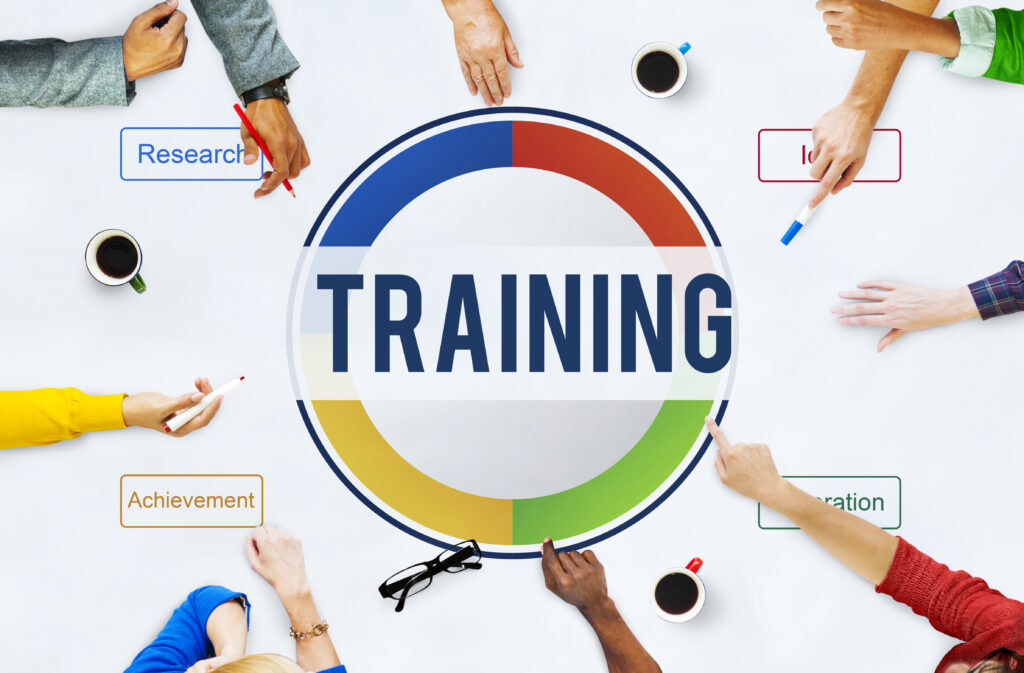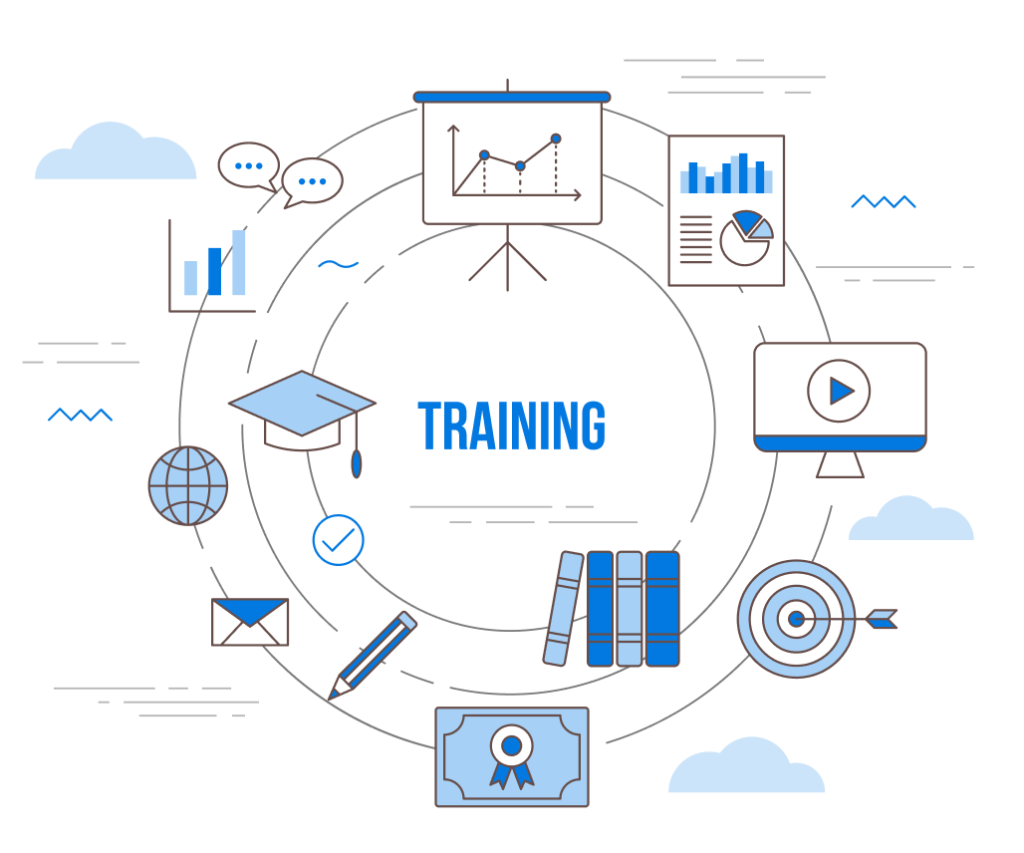Introduction
Implementing a Customer Relationship Management (CRM) system is a significant step toward transforming how your business interacts with customers. However, the true value of a CRM system is realized only when your team can use it effectively. This comprehensive guide explores CRM training strategies designed to ensure your staff is well-equipped to harness the full potential of your CRM. By following these best practices for CRM training programs, you can boost efficiency, improve customer service, and maximize ROI.
Effective CRM user training goes beyond simply providing access to the system. It involves a well-structured CRM onboarding process, ongoing education, and continuous support to address evolving needs. In this guide, we will discuss how to train employees on CRM systems, explore effective CRM training strategies, and share insights on best practices for CRM user education.
The Importance of CRM Training

Why Train Your Team on CRM?
Training employees on CRM systems is crucial for ensuring that your investment delivers tangible business benefits. A well-trained team can:
- Enhance Efficiency: Streamline daily operations by automating routine tasks.
- Improve Customer Engagement: Utilize customer data to create personalized interactions.
- Boost ROI: Increase sales and customer retention through informed decision-making.
When team members are comfortable and confident using the CRM, the entire organization benefits from improved communication, faster response times, and more accurate data management.
The Role of Effective CRM User Training
Effective CRM training is not just about learning to navigate the interface; it’s about embedding the CRM into your daily workflows. By focusing on hands-on training and continuous learning, you ensure that the system becomes a tool that drives business growth rather than a forgotten software solution.
Preparing for CRM Training
Assessing Training Needs
Before launching a training program, it is essential to evaluate your current team’s skill levels and identify specific gaps in knowledge. This assessment will help tailor the training sessions to meet the unique requirements of your organization.
Begin by surveying team members to understand their familiarity with similar systems and note any concerns they might have about the new CRM. Gathering input from department heads and supervisors is also vital to pinpoint areas that need extra focus.
Setting Clear Training Objectives
Define what you aim to achieve with your CRM training program. Clear objectives might include:
- Enhancing data entry accuracy.
- Reducing the time spent on administrative tasks.
- Improving the quality of customer interactions.
- Boosting overall user adoption rates.
Establishing measurable objectives ensures that you can track progress and adjust training methods as needed.
Allocating Resources and Budget
Investing in a robust CRM training program requires both time and financial resources. Allocate a specific budget for training materials, software demonstrations, and, if needed, hiring external experts to guide your team through the CRM onboarding process.
Proper resource allocation ensures that your training program is comprehensive and delivers long-term benefits.
Designing a CRM Training Program

Developing a Structured Training Plan
A structured training plan is the cornerstone of successful CRM user education. This plan should cover:
- Initial Onboarding: Introducing the CRM’s features and basic functionalities.
- Role-Based Training: Tailoring sessions for different teams, such as sales, marketing, and customer support.
- Advanced Training Modules: For experienced users or administrators who need to manage integrations and customizations.
A well-defined training schedule with milestones helps keep the program on track and ensures that all users are progressing at a steady pace.
Choosing the Right Training Methods
Effective training leverages a mix of instructional methods to cater to different learning styles. Consider incorporating:
- In-Person Workshops: Interactive sessions that allow for immediate feedback and hands-on practice.
- Online Tutorials and Webinars: Convenient for remote teams and can be revisited as needed.
- Interactive Simulations: Practice scenarios that mimic real-world tasks.
- User Manuals and Cheat Sheets: Quick reference guides to reinforce learning.
Using a variety of training methods ensures that the content is accessible and engaging for all team members.
Creating Engaging Training Materials
High-quality training materials are essential for effective CRM user training. Develop resources that are clear, concise, and visually appealing. Use screenshots, diagrams, and placeholders where appropriate to illustrate key concepts and workflows.
Tailor your materials to address common questions and challenges, and update them regularly to reflect any changes in the CRM system.
Implementing the CRM Onboarding Process
Kick-Off Meetings and Introductions
The CRM onboarding process should start with a kick-off meeting where the goals, benefits, and training plan are clearly communicated to all participants. This meeting sets the tone for the rest of the training program and helps build enthusiasm for the new system.
Use this opportunity to introduce the CRM’s value proposition and explain how it will enhance everyday work.
Step-by-Step System Walkthroughs
Conduct detailed walkthroughs of the CRM system. Demonstrate how to perform basic tasks such as logging in, entering customer data, and generating reports. These live demonstrations should be interactive, allowing users to ask questions and practice on the spot.
Break down complex functionalities into smaller, manageable steps, and use live examples to show how the system integrates into daily workflows.
Hands-On Training Sessions
Hands-on training sessions are critical for reinforcing the concepts learned during demonstrations. Create exercises and simulations that mimic real-life scenarios, enabling users to apply their knowledge in a controlled environment.
Encourage participants to complete these exercises independently or in small groups, which fosters collaboration and builds confidence in using the system.
Role-Specific Training Modules
Different teams will use the CRM in unique ways. Develop role-specific training modules that address the distinct needs of sales, marketing, customer support, and management. For example:
- Sales Teams: Focus on lead tracking, pipeline management, and conversion metrics.
- Marketing Teams: Emphasize segmentation, campaign tracking, and customer analytics.
- Customer Support: Cover ticket management, follow-up processes, and service reporting.
Tailoring training sessions to specific roles ensures that every user gains relevant and practical knowledge.
Best Practices for CRM Training Programs

Incorporating Continuous Learning
CRM training should not be a one-time event. Incorporate continuous learning opportunities such as refresher courses, advanced training sessions, and periodic reviews of new features. Continuous learning helps keep users updated and reinforces their skills over time.
Establishing a Feedback Loop
Encourage users to provide feedback on the training process. Use surveys, focus groups, or one-on-one meetings to gather insights into what is working well and what needs improvement. A feedback loop not only helps refine the training program but also makes users feel valued and involved.
Using CRM Champions
Identify enthusiastic users who can act as CRM champions within their teams. These individuals can provide peer-to-peer training, offer support, and share best practices. CRM champions help drive user adoption by serving as accessible resources for their colleagues.
Leveraging Technology for Training
Utilize technology to enhance your training program. Online learning platforms, interactive webinars, and virtual classrooms can make training more engaging and accessible, especially for remote teams. Additionally, incorporating gamification elements like quizzes and leaderboards can motivate users and make learning fun.
Measuring Training Effectiveness
Set up clear metrics to evaluate the success of your training program. Monitor KPIs such as user adoption rates, data entry accuracy, and system usage frequency. Regularly review these metrics to determine whether the training is achieving its objectives, and adjust the program as necessary.
Overcoming Common CRM Training Challenges
Addressing Resistance to Change
One of the most significant challenges in CRM training is overcoming resistance to change. Employees may be reluctant to abandon familiar processes in favor of a new system. Combat this resistance by communicating the benefits of the CRM clearly and involving users early in the training process. Highlight success stories and quick wins to build momentum and trust.
Ensuring Engagement and Participation
Maintaining high levels of engagement during training sessions can be challenging, especially if the content seems too technical or monotonous. To keep sessions interactive, incorporate group activities, live demonstrations, and Q&A segments. Use real-life examples to illustrate how the CRM can solve everyday challenges.
Managing Different Learning Paces
Not every team member learns at the same pace. To accommodate this, offer a mix of group sessions and individual coaching. Provide supplemental materials such as video tutorials and detailed guides that users can review at their own pace. This flexibility ensures that all users, regardless of their learning speed, can achieve proficiency.
Overcoming Technical Challenges
Technical issues during training—such as system downtime or software glitches—can disrupt the learning process. Plan for potential technical challenges by having backup resources and IT support available during training sessions. This proactive approach helps minimize interruptions and ensures a smoother learning experience.
Case Studies and Success Stories
Learning from Real-World Examples
One of the best ways to illustrate effective CRM training strategies is by sharing case studies and success stories from organizations that have successfully implemented CRM systems. Highlight how these companies approached CRM training, the challenges they faced, and the strategies they used to overcome them.
Real-world examples not only provide practical insights but also serve as motivational tools for your team. They demonstrate that effective CRM user training can lead to tangible improvements in efficiency and customer engagement.
Success Metrics and Outcomes
Share measurable outcomes from these case studies, such as improvements in data accuracy, increased sales conversion rates, or enhanced customer satisfaction scores. Quantifying the benefits of effective CRM training reinforces the importance of investing in user education and continuous learning.
Future Trends in CRM Training

Evolving Training Techniques
As CRM systems become more sophisticated, training techniques must evolve. Embrace emerging trends such as virtual reality (VR) simulations, mobile learning platforms, and AI-powered personalized training programs. These technologies can provide immersive and adaptive learning experiences that further enhance user adoption.
The Role of Ongoing Education
The landscape of customer relationship management is continuously changing. As new features and updates are released, ongoing education becomes essential. Encourage your team to stay curious and proactive about learning, and consider establishing a regular schedule for training updates and knowledge sharing.
Preparing for Tomorrow
Future-proof your CRM training program by integrating flexibility and continuous improvement into your strategy. Regularly update training materials, gather user feedback, and adapt to new technological advancements. This commitment to lifelong learning will ensure that your team remains proficient and that your CRM system continues to drive business success.
Final Thoughts
Effective CRM training is not a one-time event—it is an ongoing process that evolves with your business needs. By implementing robust CRM training strategies, you empower your team to use the system effectively, resulting in higher productivity, improved customer interactions, and maximized ROI.
Investing in comprehensive training programs, continuous learning opportunities, and a supportive CRM onboarding process will pay dividends in the long run. When your team is well-trained, they are better equipped to navigate challenges, leverage advanced features, and fully integrate the CRM into your daily operations.
Remember, the goal of CRM training is to transform your system from a software tool into a powerful asset that drives growth and success. By following the best practices outlined in this guide—such as personalized training, continuous education, and proactive feedback—you can overcome common challenges and ensure that your CRM investment yields lasting benefits.
In today’s dynamic business environment, ongoing training and support are more critical than ever. Stay committed to refining your CRM training programs, embrace new learning technologies, and celebrate the small wins along the way. A well-trained team is the key to unlocking the full potential of your CRM system.




